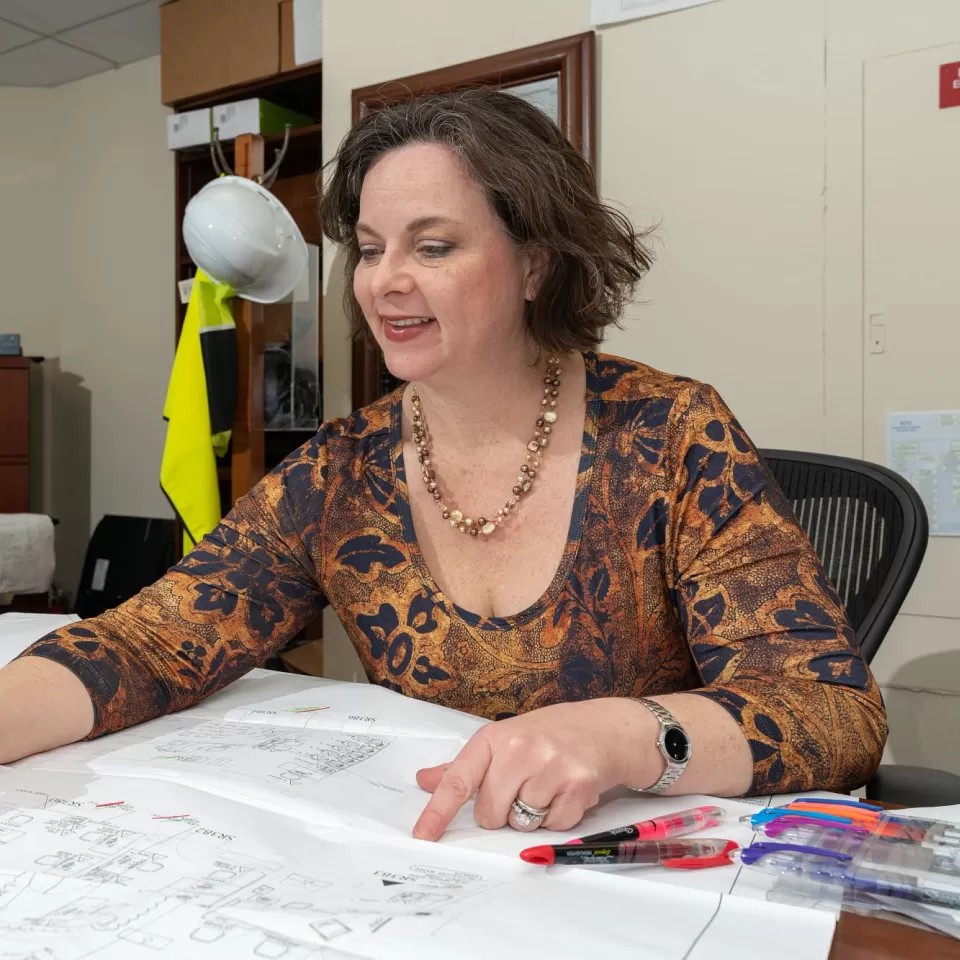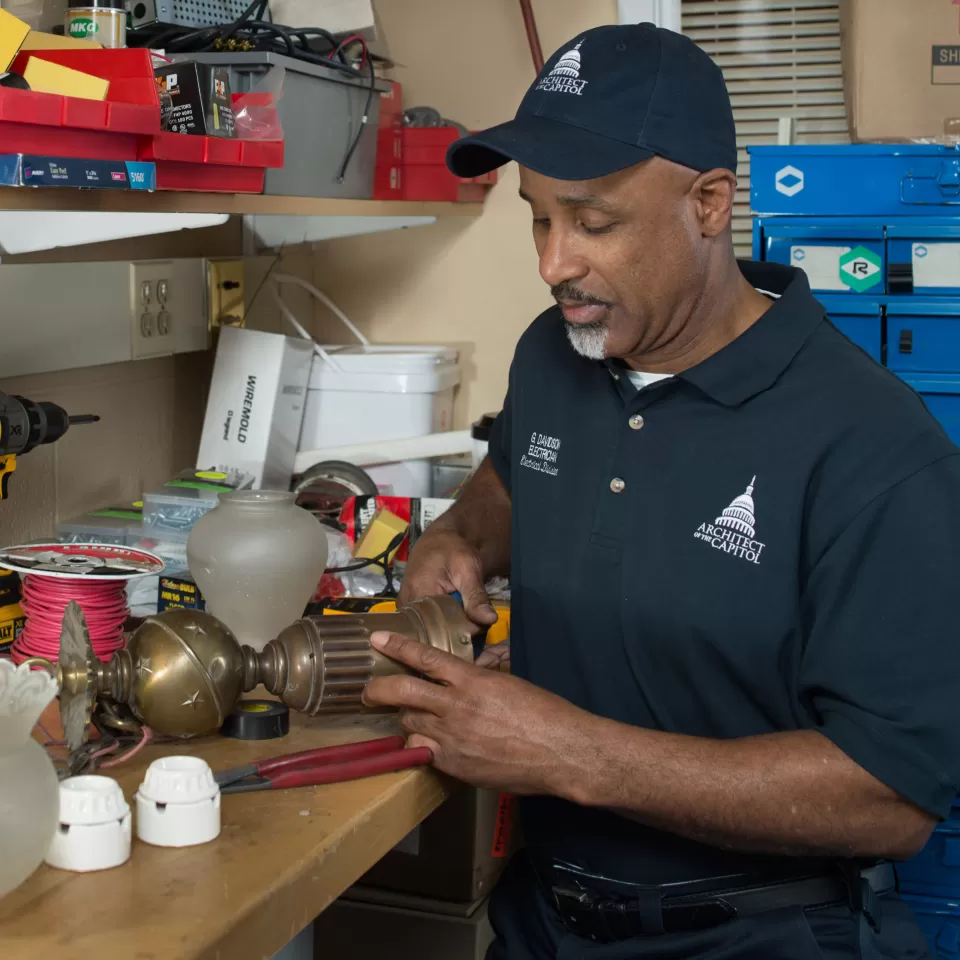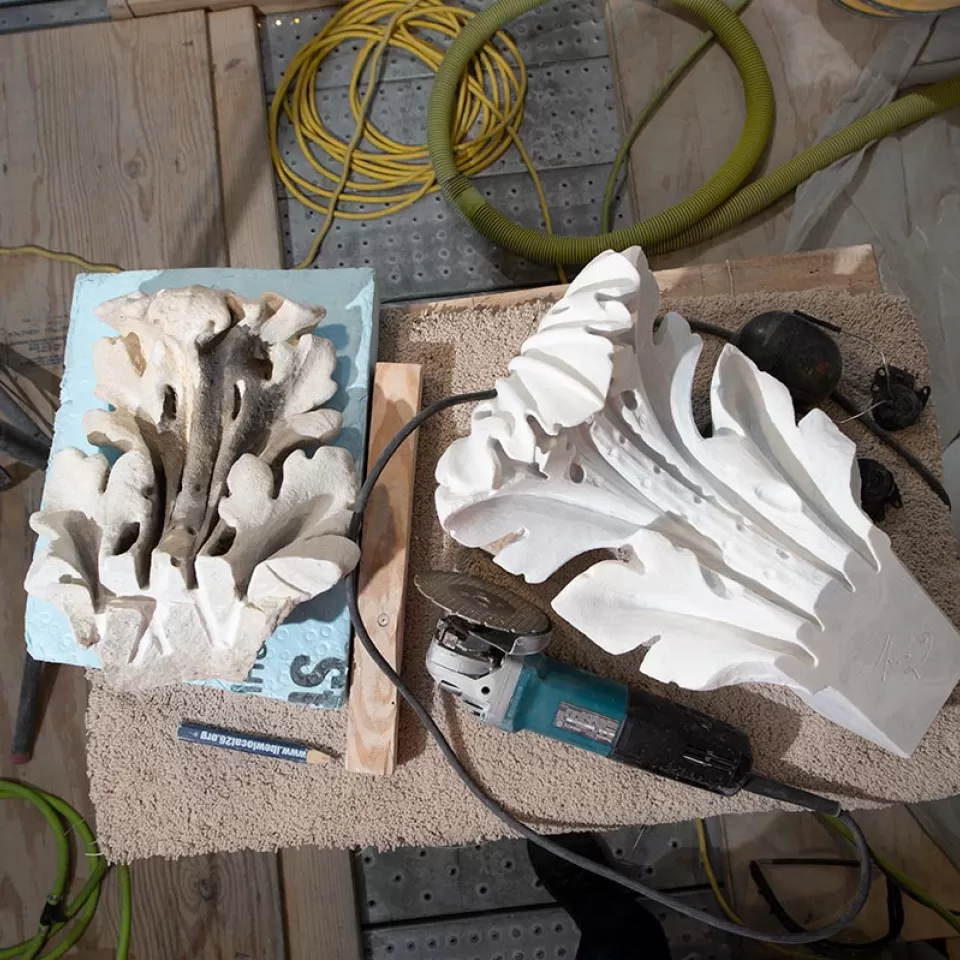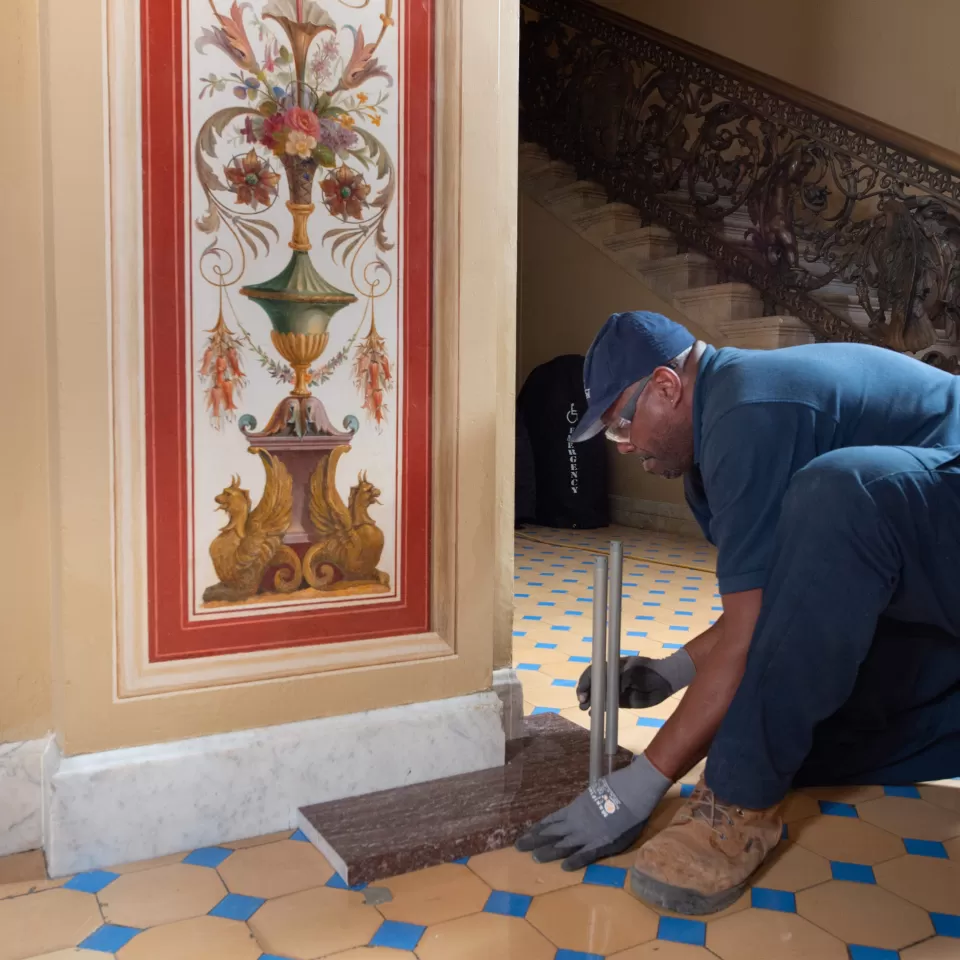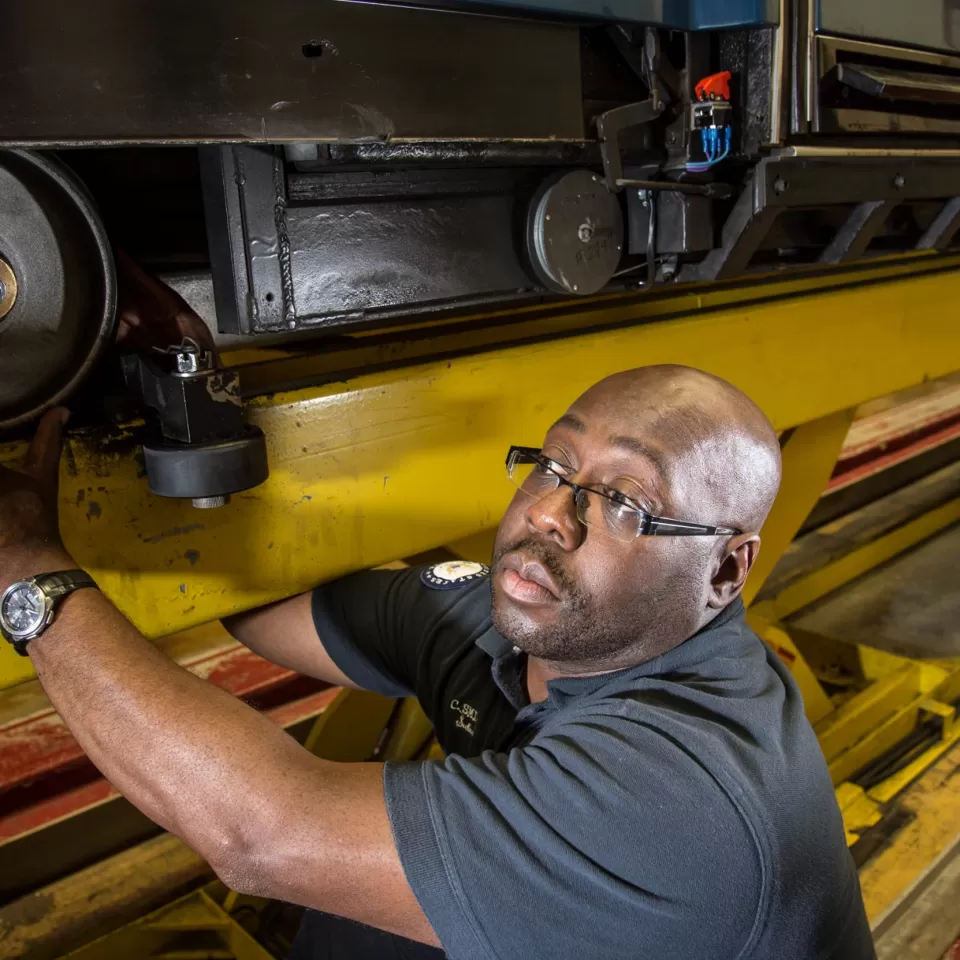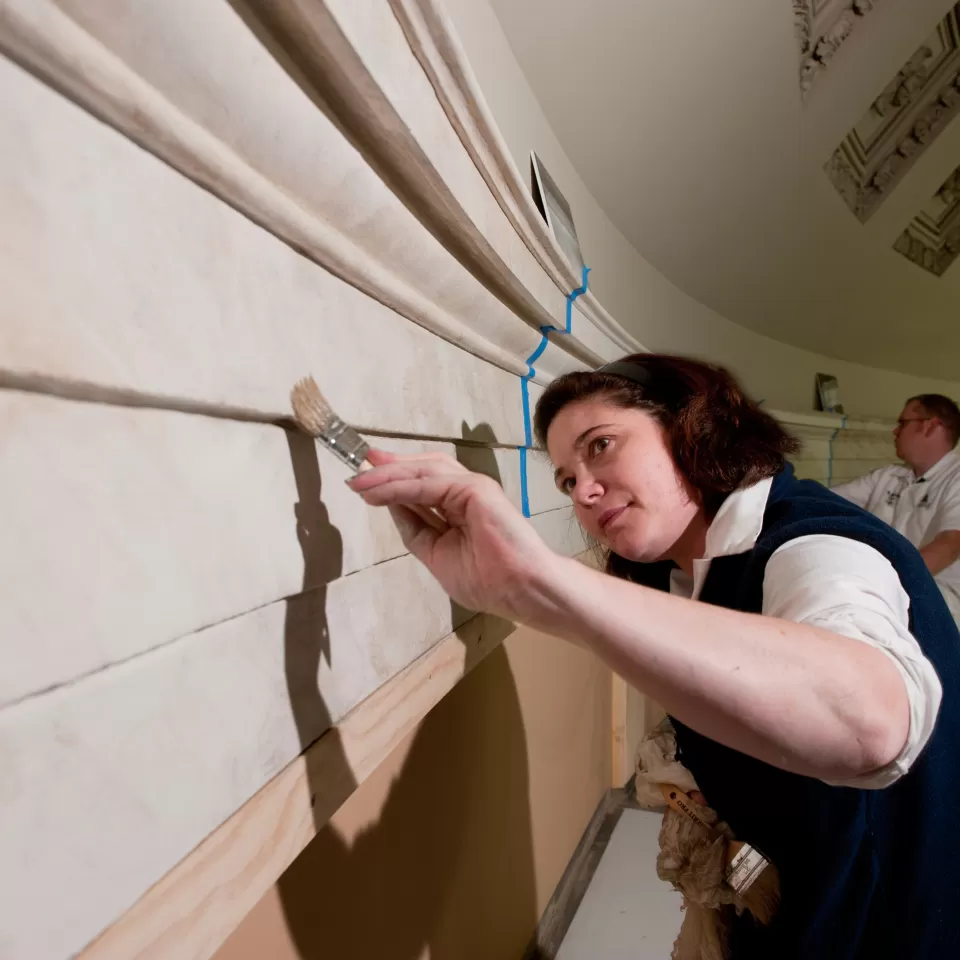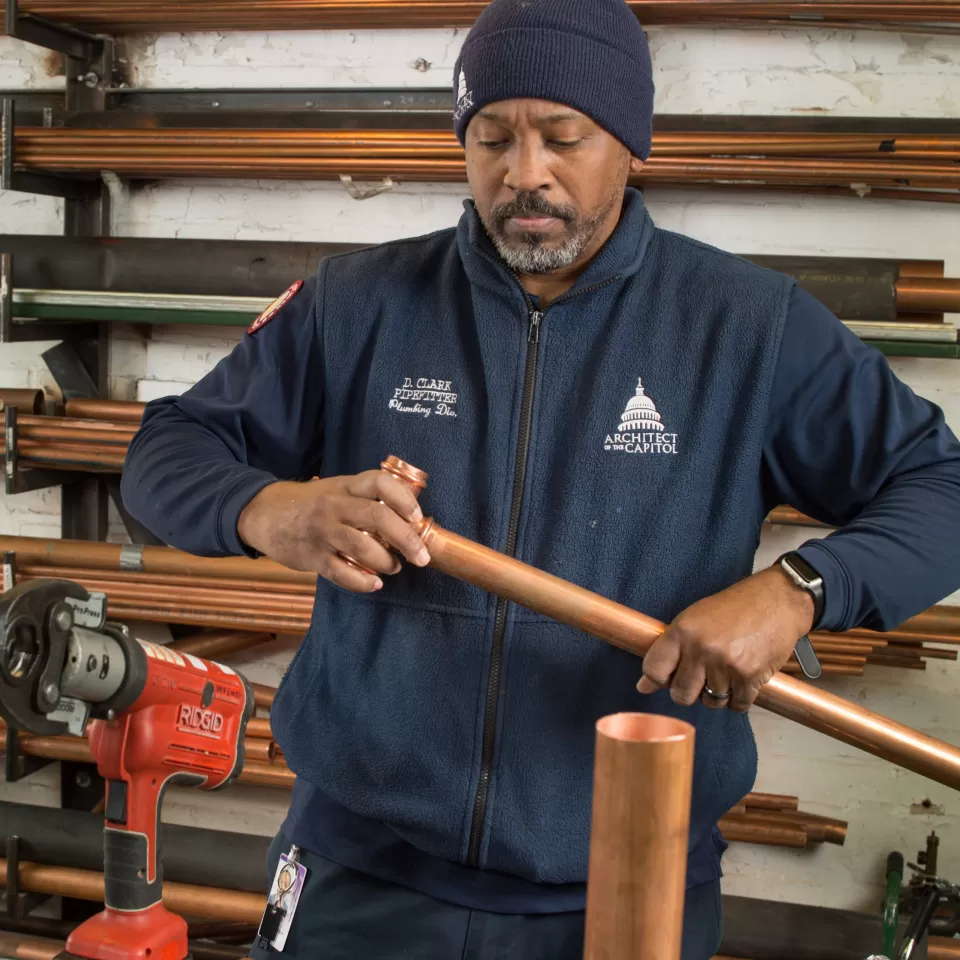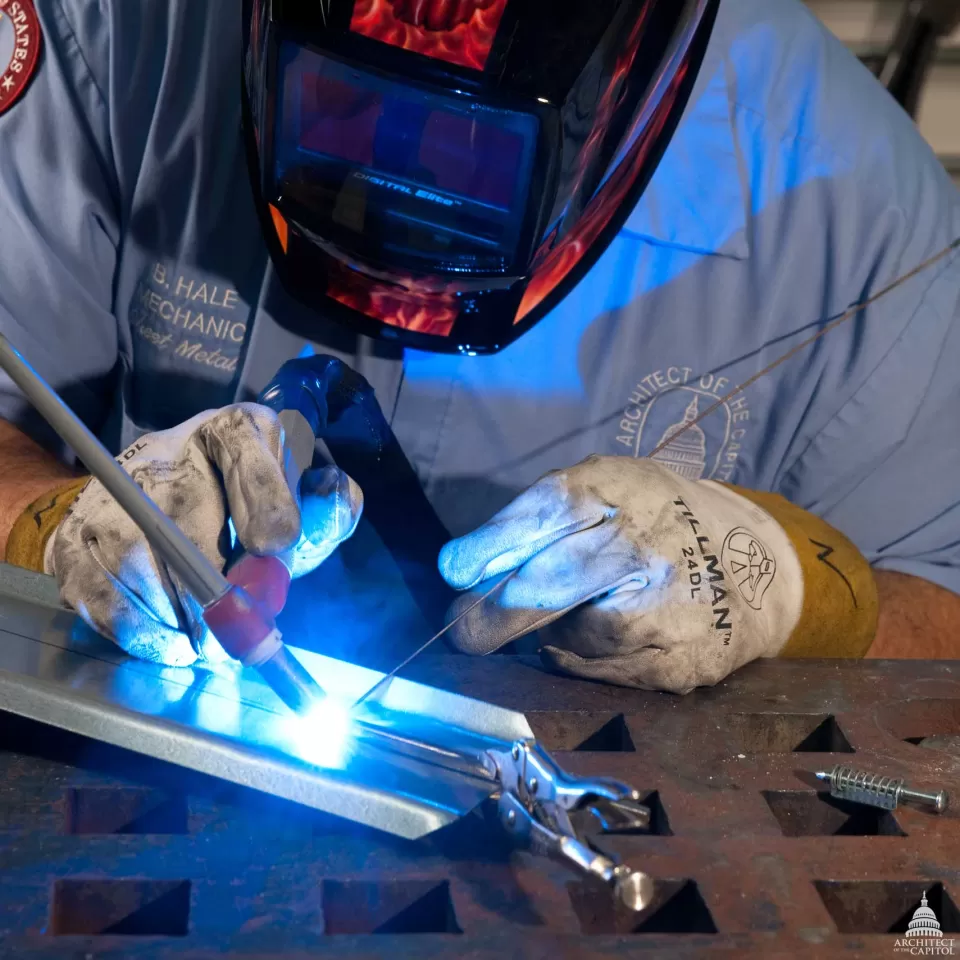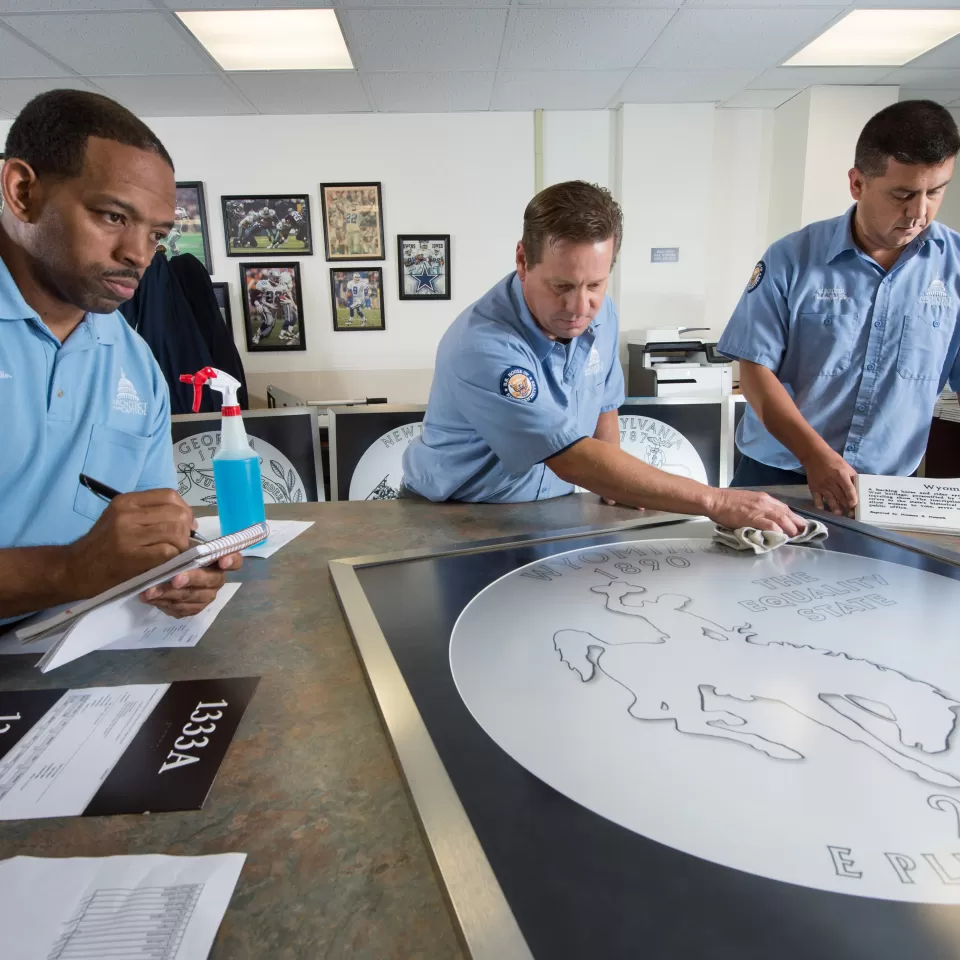Discover More
The Architect of the Capitol (AOC) employs more than two dozen architects who work in different divisions across the agency with various roles and responsibilities.
Some architects have the position of project manager, but the act of managing a project is a distinct skill for which they are trained independently of their professional background. Many architects work directly within their chosen profession and have three general duties: execution of studies and design for projects, professional advice and guidance to the jurisdictions, and technical support to projects through reviews of consultant designs as managed by project managers. AOC architects also usually have extensive experience in historic preservation, which is generally developed through on-the-job experience.
The AOC leads the charge in successfully reducing the energy used in the historic public buildings within its purview, arguably the most difficult set of buildings in which to attempt such reductions. In addition, the AOC is one of the few places where staff architects and engineers work directly with highly skilled, in-house preservation crafts persons on a day-to-day basis.
The AOC recognizes that the ultimate goal in sustainability is the preservation of historic structures into virtual perpetuity: the buildings have no projected end-of-life, but are renewed over and over again. AOC employees are entrusted to preserve Capitol Hill’s national treasures for Congress and the public to enjoy for years to come.
In Their Words
"One of my favorite things about this job is that I still get to be a 'doer,' and I do something different each day."
— Robin Ingram, Architect
"Looking at it from a historic standpoint — the beauty of the buildings we have... and keeping that history alive and maintaining it, I think that's one of the most beautiful things of my job. And I'm helping to solve problems. That's what makes this job so exciting."
— Arthur Logan, Architect
"It's an honor to be a steward of these buildings, to maintain the integrity of these buildings and make sure they're functionally flawless. These structures will be here longer than all of us!"
— Bonnie Holod, Assistant Superintendent




